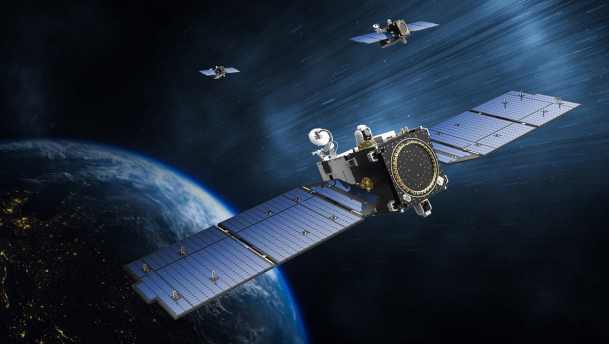Latest News
Northrop Grumman and Boeing’s Millennium Receive Missile Defense Satellite Awards

Graphic of a resilient missile warning and tracking MEO program. Photo: Millennium Space Systems
Northrop Grumman and Boeing’s Millennium Space Systems on Wednesday received U.S. Space Force (USSF) missile defense awards of nearly $1.8 billion and $386 million, respectively.
The almost $1.8 billion award to Northrop Grumman from Space Force Space Systems Command (SSC) is to finish production of the first two Next Generation Overhead Persistent Infrared Polar (NGP) satellites — an award that brings the total face value of the contract to $4.1 billion.
The $386 million SSC contract with Millennium is for the second batch of six Epoch 1 Medium-Earth Orbit (MEO) satellites. Millennium is to deliver the first six Epoch 1s by the end of fiscal 2026 and the second six by early fiscal 2028.
“Small satellite proliferation has a fundamentally different ground concept than traditional systems,” Lindsay Dewald, MTC program manager for Millennium Space Systems said in a release. “What we did was architect an automated mission operations approach with real-time and pre-planned tasking.”
SSC said these two planes “posture the USSF to deliver initial warfighting capability through Epoch 2 in the early FY29 timeframe. Future Epochs will be fielded in two to three-year increments and increase capability of the sensor network with each delivery.”
This year, SSC canceled RTX’s Epoch 1 contract and cited RTX’s “significant cost growth from the original agreement baseline, projecting slips to the launch schedule, and…unresolved design challenges.”
Northrop Grumman won the NGP contract in 2020 and completed the space vehicle critical design review in April.
The satellites are to track ballistic and hypersonic missiles over the Northern Hemisphere.
The Space Force’s fiscal 2024 budget zeroed research and development funding for one of the three planned geosynchronous orbit (GEO) Next Gen OPIR missile warning satellites by Lockheed Martin, as the Space Force posits that having a band of many, smaller satellites in lower orbits will complicate an adversary’s anti-satellite targeting and improve deterrence against adversary ballistic and hypersonic missile attacks.
Stay connected and get ahead with the leading source of industry intel!
Subscribe Now